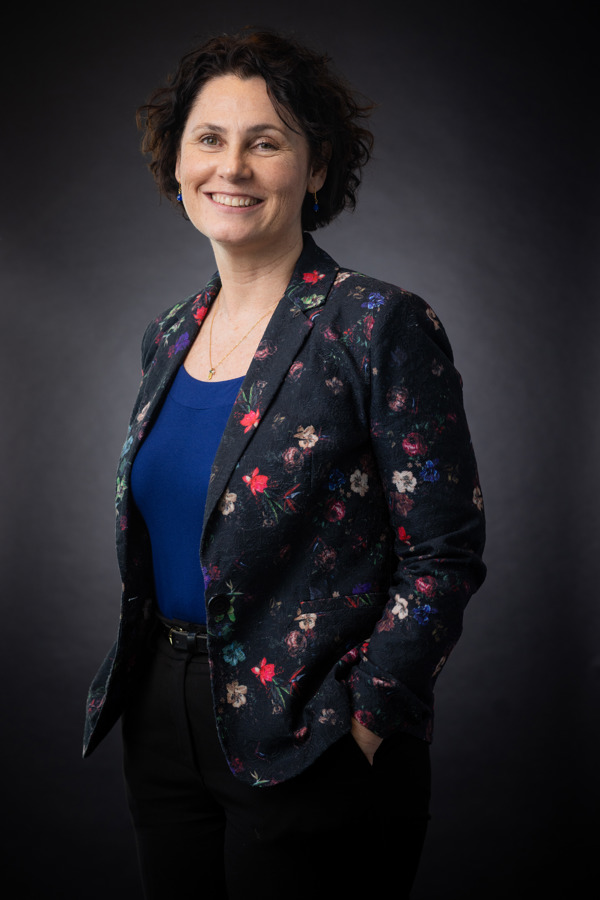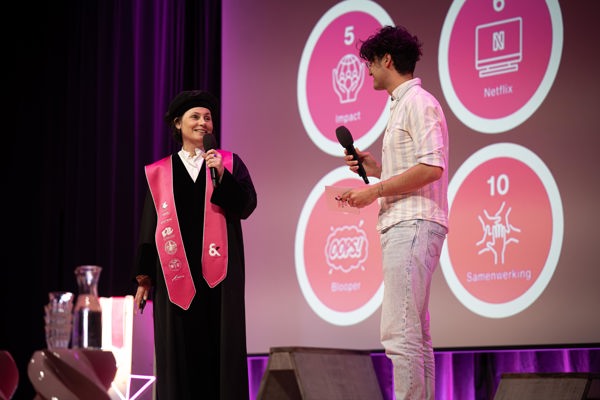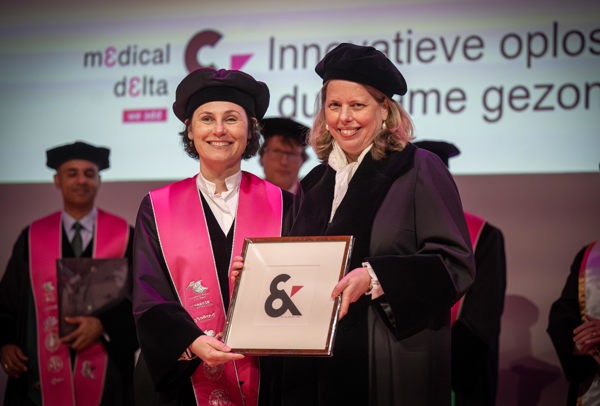Better collaboration between the medical and social domains can reduce pressure on healthcare and improve support. Dr. Suzan van der Pas is researching how this collaboration can be enhanced.
When community nurses visit someone at home and see that the house is dirty and there are piles of unopened mail, they need to know who they can refer to. It's important to accurately assess what this client or patient needs and who can provide the right help.”
Suzan van der Pas is Professor of Social Innovation at Leiden University of Applied Sciences and also Associate Professor at the Department of Public Health and Primary Care at the Leiden University Medical Center (LUMC) and the Faculty of Governance and Global Affairs at Leiden University. This year, she was appointed as a Medical Delta Professor. Within Medical Delta, Van der Pas is involved in the Medical Delta 'Healthy Society Program' and the Medical Delta program ‘Vital Delta’ as lead professor of one of the work packages.
What does this appointment mean to you?
“I see it as a valuable recognition to be part of Medical Delta, especially because I come from a different angle—the social domain. I work as a professor at the university of applied sciences and am also affiliated with the university. Transdisciplinary collaboration is essential to me; it’s at the core of my daily work. I am firmly rooted in practice, working alongside residents, clients, patients, and professionals. That’s precisely why I find it so meaningful to be part of Medical Delta and to be able to build a strong bridge between practice, my research group, and the university.”
Can you briefly describe your area of expertise?
“I have a background in sociology and nursing, and my expertise lies in the collaboration between the social and medical domains. My research is practice-oriented and carried out in close cooperation with care and welfare organizations, residents, and volunteers. I focus on current issues from the field, such as identifying and addressing poverty, strengthening cross-domain collaboration, and exploring how older adults can live independently at home for as long as possible.
The field is evolving rapidly, partly due to technological developments.
In doing so, I work with lecturers and students from both universities of applied sciences and research universities. Education and training the next generation of professionals is therefore an important part of my work. In recent years, I’ve seen how quickly the professional field is changing. I believe it’s important to integrate that evolving practice into education. This way, students learn to work with the knowledge and skills they’ll truly need in the future. To achieve this, we develop educational innovations such as serious games and hackathons. These forms of education act like pressure cookers for generating creative solutions and learning to deal with unexpected situations.
The field is evolving rapidly, partly due to technological developments. This also places demands on us as researchers. With my sociological background, I examine the impact of technology on how people interact with one another. What does it mean, for example, for a professional in the social domain who has to work with technology? What do they need to be able to do that? Technology developers often don’t ask users enough about what they actually need. That’s where I see the connection with Medical Delta: there is already a great deal of technological knowledge, and from the social domain, I can contribute to better aligning that knowledge with real-world practice.”
The healthcare system is under increasing pressure. What kind of transition do we need to undergo, and how can your research contribute to that?
“A significant part of my academic research focuses on regional collaboration and cross-domain cooperation. That’s exactly where the major challenge lies right now. We need to critically examine how we collaborate—on multiple levels. Not just between professionals in the field, but also at the organizational level. Think of collaboration between academic hospitals, such as the LUMC, and regional healthcare institutions.
There are many discussion tables, but too often they involve talking about collaboration rather than actually doing it. On top of that, organizations often compete with each other, partly due to financial incentives, which slows down the necessary changes. We need vision and leadership to break through that impasse and make cooperation possible at all levels.
On the operational level, too, we must be careful not to get stuck in consultation structures. Professionals in the field, such as social workers and nurses, need a broad perspective. When community nurses visit a client and see a dirty home with piles of unopened mail, they need to know who they can refer to. It's crucial to assess what this client or patient truly needs and who can provide the right help.
The challenge for the coming years is to properly organize that collaboration—together with clients, patients, and residents themselves. Because if we do that well, it will truly make a difference. Then we’re building a more socially connected society where we take better care of each other. Everyone—whether you’re a social worker, nurse, physiotherapist, or community police officer—works from their own expertise, but with the willingness to look beyond the boundaries of their own profession, organization, or system.”
What is it like to start collaborating with someone from a completely different discipline?
“I think this is the most enjoyable part of my work: collaborating with people from different disciplines. This applies both at the scientific level and in practice.

For example, when I work with municipalities or civil servants, they speak a different language than people from healthcare or social work. Yet, it is precisely essential to connect these worlds when addressing tough social issues, such as tackling poverty or strengthening collaboration within neighborhoods.
Together with all involved parties, I work on formulating a shared social question. For instance: which organizations in our municipality are involved in addressing poverty? From that shared question, we start working together. We also support the next steps—what is already going well and what is still missing?
Language plays a crucial role here. It works best when people themselves discover that they don’t all mean the same thing by certain concepts. My role is to guide that process and create awareness about these differences.”
What motivates you to collaborate with others outside your field?
“What motivates me is the innovative power that arises when you collaborate with others outside your own field. My professorship is called Social Innovation for a reason—it’s all about improving and renewing practice. It is precisely transdisciplinary collaboration, where different perspectives come together, that is needed to effectively address social challenges. When all parties involved actively contribute to the research, the results become stronger, more relevant, and more useful.
It is precisely transdisciplinary collaboration, where different perspectives come together, that is needed to effectively address social challenges.From my scientific background, I bring empirical knowledge, and through the research group, I translate that knowledge into practical solutions. That’s what drives me, even when it comes to small improvements. For example, when it turns out that informal caregivers lack certain knowledge about the available care and support. Then we develop something concrete together, like an informative brochure. That may seem simple, but it has a direct impact on practice. And that, in particular, gives me great satisfaction.”
What will a patient, (care) professional, or Dutch citizen notice from your work in the future? What do you hope to have achieved for them in five years?
“I hope that in five years there will be concrete tools for better collaboration, both at the operational and managerial levels, as well as at the regional level. That we collaborate not only horizontally, between different disciplines, but also vertically: from the workplace to the boardroom. Because what happens at the operational level is strongly influenced by decisions made higher up. My aim is to contribute to better alignment between all these layers, so that policy and practice reinforce each other. This is also my commitment within Medical Delta, together with fellow professors and lecturers.”
With the new programming, Medical Delta is placing more emphasis on the needs from practice. You already have a lot of experience with this. How do you involve practice more effectively?
“If you really want to collaborate with practice, you need to involve them from the very beginning—not just when your research is already ready to start. Invite practice partners and citizens to contribute to formulating the research question. Only then does the research align with the issues that truly matter, and you create the support needed to actually make a difference in practice.
That also demands something from researchers: you have to learn to speak the language of practice. Scientific research is often slow and conceptual, and then you risk losing your practice partners along the way. Those concepts are valuable, but you need to bring partners along in the process and adjust your language and pace. That’s why I often work with action research and qualitative methods. We conduct research together in practice and reflect on the results together to reach shared insights and conclusions.
Within Medical Delta, how you involve practice strongly depends on the type of research. A technological innovation for, for example, heart diseases requires a different approach than community-based research like I do. But in all cases, the earlier and more actively you involve practice, the greater the chance of relevant and applicable results.”

Large and complex issues such as the healthcare transition require big and comprehensive solutions. What role does collaboration between research universities (wo), universities of applied sciences (hbo), and vocational education (mbo) play in this?
“Collaboration between research universities (wo), universities of applied sciences (hbo), and vocational education (mbo) is essential to effectively address the healthcare transition. Each educational level brings a unique perspective: mbo professionals are close to the execution, hbo connects with practice-oriented research, and scientific education offers theoretical depth. These levels are complementary, and an integrated approach is precisely what is needed to achieve sustainable and widely supported solutions.
This conviction is also why I consciously chose to work in the hbo sector. I completed my PhD research on the relationship between elderly people and their adult children. Very interesting research, but I missed the direct connection to practice. My background as a nurse certainly played a role in that. I wanted the knowledge we develop to actually land where it is most needed.
You can write beautiful scientific articles, but if the people in practice don’t know about them or can’t apply them, little changes in practice. Now I work at the intersection of research and practice, which for me is truly the best of both worlds, and that gives me much greater satisfaction.”
Well-integrated care between the social and medical domains can bring about significant improvements. But how do you organize that effectively?
“A good example is the research we are conducting on the so-called ‘customer journey’ of people with dementia. This concept originally comes from the commercial sector, where they look at customers’ experiences during their interactions with an organization. We have translated this approach to healthcare. For this research, we map out the steps that people with dementia go through—from the first signal to admission to a nursing home—and what their experiences are along the way. Together with municipalities, care, and welfare organizations, we investigate what this customer journey looks like. Then we ask the frontline professionals to outline what care they provide at each moment. By doing this, they themselves discover where gaps or bottlenecks exist. After that, we facilitate discussions in which they jointly come up with ideas for improvement, which they then take on themselves.
That self-direction is crucial for support and lasting change. We conduct the research and present the findings, but practice must translate them into action. Otherwise, good advice quickly ends up forgotten. Another example is our research into people with dementia from migrant backgrounds. Initially, care institutions mainly saw obstacles. But by jointly mapping out what was truly needed, they came up with the idea to organize meetings about culturally sensitive care for professionals. In this way, we help practice to come up with solutions themselves that fit their reality and are immediately applicable.”
Another important principle in healthcare is ‘the right care, in the right place.’ Why does this not always succeed yet, and how should it ideally work?
"An important bottleneck is that collaboration is still insufficient. Knowing each other and understanding each other’s work is crucial in this. For example, we have a project with trainee general practitioners and social work students. It turns out they don’t really know what the other person does. Yet that understanding is precisely what is needed to provide the right care in the right place.
In addition, there is a fundamental tension in our healthcare system between supply and demand. When you create supply, demand naturally arises as well. Healthcare becomes overloaded, while some problems could also be solved outside of formal care. Especially regarding mental or social well-being, we need to think much more about how to organize a caring, social society. A society where people help each other, stand stronger in their own power, and become less dependent on professional care. Sometimes we have lost sight of that a bit."
You will probably now meet more scientists and practice partners from other disciplines and institutions. Whose work has truly surprised you, and why?
“It’s difficult to name just one person, but I’m especially moved by people who truly know how to build bridges between different worlds. Those who can connect scientific and practice-oriented research and have the ability to bring theory and practice together.
I’m also inspired by care and welfare professionals who are entrepreneurial and creative. Those who, within their means, continuously look for what is possible. Professionals who put people’s needs at the center and are willing to think outside the box to make a real impact.”
What message would you like to share?
"An important challenge is to better connect the worlds of research, policy, and practice. I see every day how great the influence of political policies and funding streams is on what happens in practice. As a researcher, you can develop valuable and relevant innovations, but if they don’t fit within existing policies or funding frameworks, the impact remains limited.
My call to leaders and policymakers is therefore: involve researchers and practitioners early in decision-making. Together, look at what knowledge is already available, what is truly needed, and how we can embed that sustainably. That collaboration is far from self-evident, while it is precisely there that the key to sustainable impact lies."

